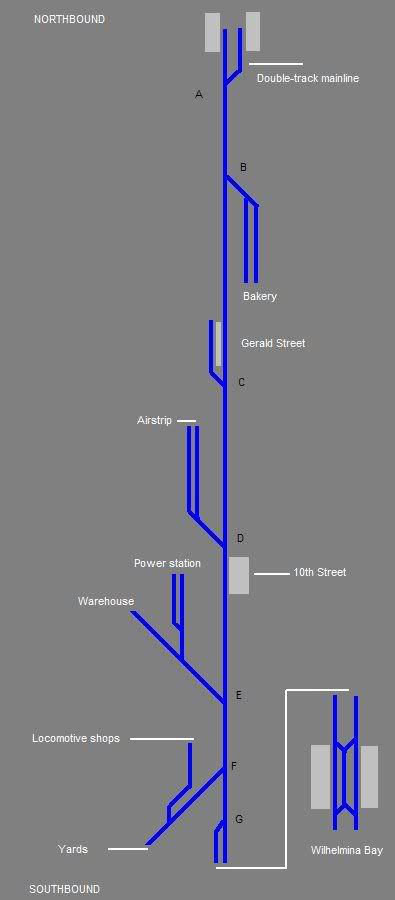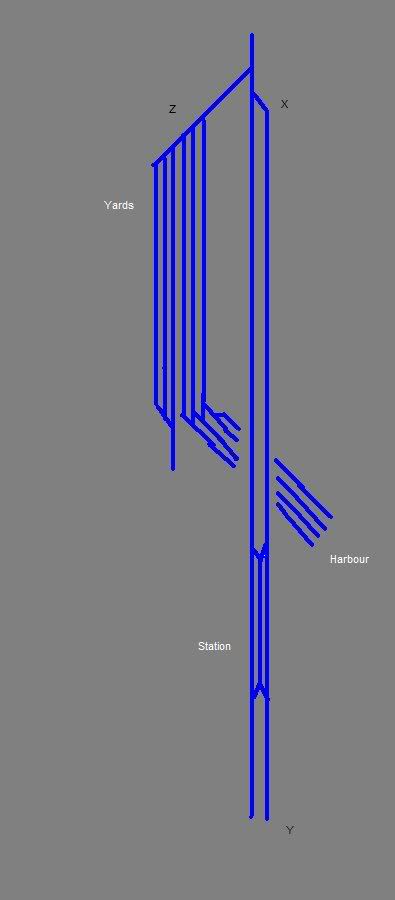
How would I signal the section from A to G as one block in which only a single train can be in it anytime? Divergences B, C, D, and E are industrial sidings and AI is usually not programmed to be take them. However, they are still fully signaled at the junction connecting to the mainline. F leads to a six-track yard of which the 3 easternmost ones are part of the mainline and is used by freight AI.

Both freight and passenger tracks converge at Y a short distance down south. Occasionally freights will be broken up into the 3 western tracks and brought to the local sidings B, C, D, and E by a road switcher.
Given diverge signals, absolute signals and any triggers or trackmarks that may be required, how do I go about signalling A to G/Z such that:
a) the AI treats A to G/Z as a single block,
b) no AI train coming from the north or south will enter the block when a switcher is within A to Z?
Cheerio,
Nicholas.


